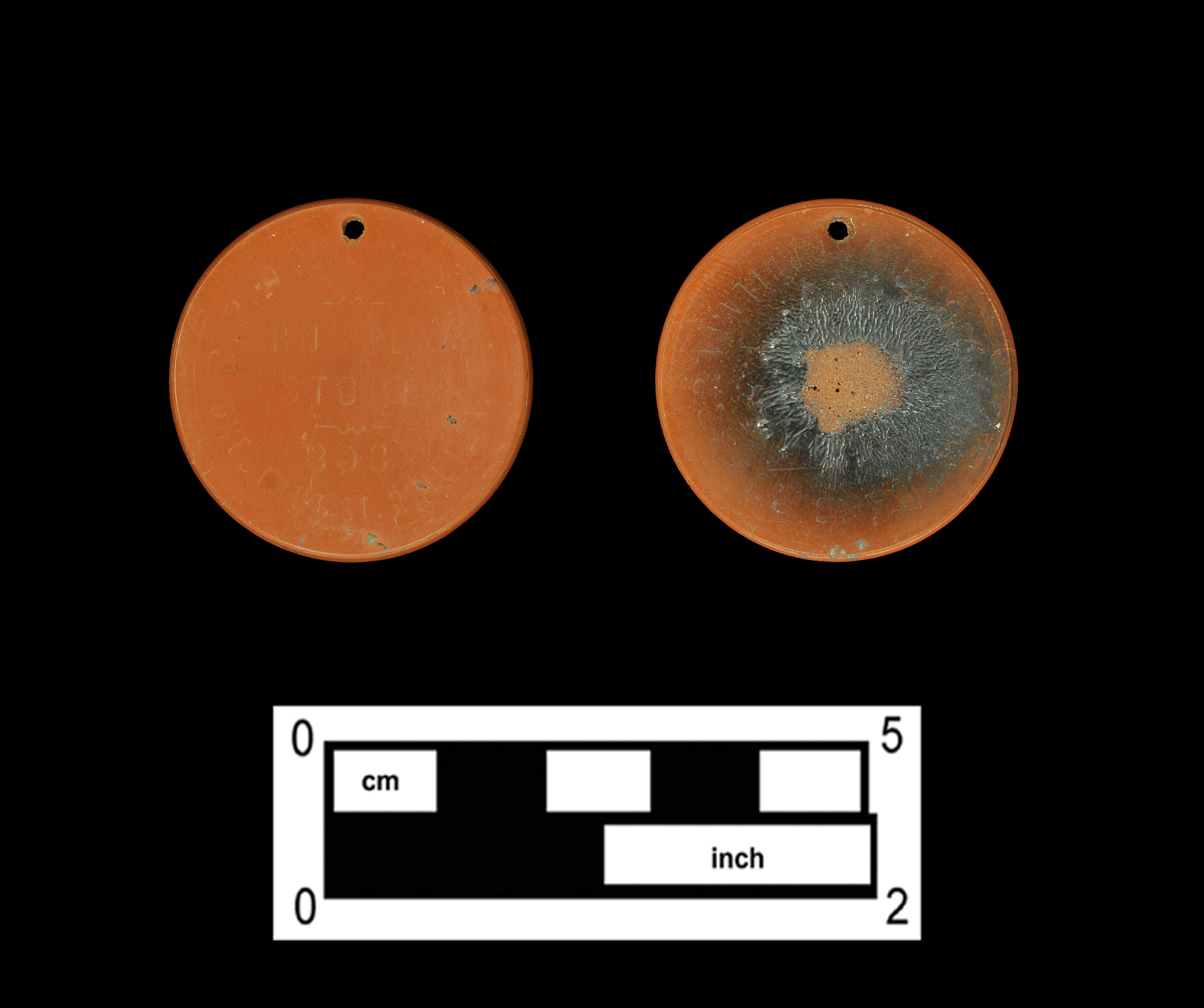Daniel P. Dieterich’s Rubber Store Token
A single red vulcanite token was recovered from Feature 1 that reads “D. P. DIETERICH’S / RUBBER STORE / 308 / CHESTNUT ST. PHILADA.” The opposite face of the token is severely burned, so it is unclear whether it represents a trade token or is merely an advertising piece (Cat # 8.31.249). Pressed from large sheets of hard rubber, hard rubber tokens were primarily used in two ways: as fare tokens for transportation companies or as advertising cards. Some merchants also issued these hard rubber tokens with a “good for” value.

Daniel P. Dieterich was a well-known Philadelphia rubber merchant and proprietor of Goodyear’s rubber store at 308 Chestnut Street. Born in New York City, Dieterich worked in the first rubber store ever opened there, and as a result became acquainted with Charles Goodyear, the inventor of vulcanized rubber. A teenage Dieterich arrived in Philadelphia around 1850 and opened his business, eventually known as the Goodyear Rubber Belting and Packing Company, on Chestnut Street shortly thereafter. Dieterich died of pneumonia in 1892 at the age of 58.
Most hard rubber merchant tokens such as this were struck between circa 1860 and 1885, although some did continue to be produced through the 1890s. 1 By the 1880s, the increased demand for hard rubber necessitated the rise of other materials, such as celluloid and aluminum, for the production of tokens. Vulcanized rubber, or “vulcanite,” consisted of a sulphur-infused rubber compound. Vermilion, garancine (ground root of the madder plant), cochineal (a type of insect), and oxide of antimony (a chemical element) were used to achieve the light red color.
The token itself certainly dates between 1857 and 1892—the date range dictated by the post 1857–1858 address on the token and the death of Dieterich. Given what is known about the production of hard rubber tokens, however, it was likely produced sometime between the early 1860s and mid-1880s. As a result, the token could have been deposited by anyone in the Cathers (late 1850s-1864), McCaulley (1864–1882), or Cotter (1882–1887) families. While it is unlikely, the fact that hard rubber tokens did endure on a small scale into the 1890s, cannot rule out the Steinmeyer family (1887+) either.
References
- David E. Schenkman, Merchant Tokens of Hard Rubber and Similar Compositions (Bryantown, MD: Jade House Publications, 1991), 12. ↩